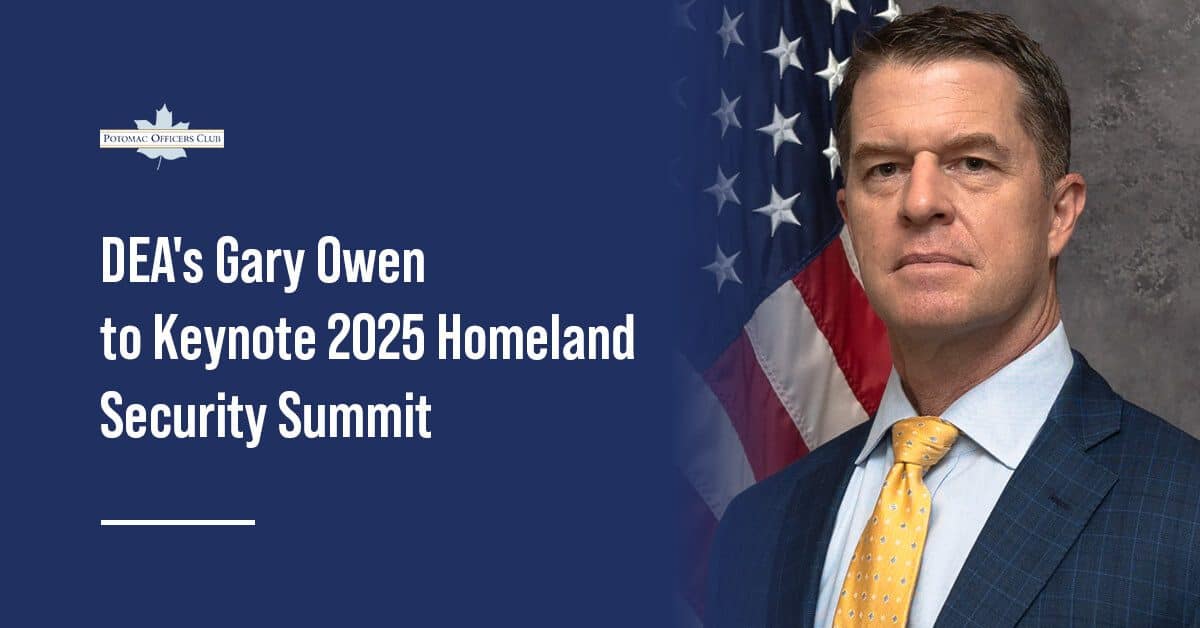
Photo: POC
How ICE Uses AI—From Police Reports to Housing
Artificial intelligence was a popular topic of conversation at Potomac Officers Club’s 2025 Homeland Security Summit. Panelists on the From Lab to Launch: Advanced AI Applications in National Security panel discussed the technology’s benefits and limitations and what they hope to get out of it in their day-to-day work to make it truly transformational.
How Is ICE Using AI?
One panelist at the Nov. 12 event provided intriguing insight into how a top federal law enforcement agency is using AI, from helping with police reports to finding housing for suspects. Matthew Elliston, U.S. Immigrations and Customs Enforcement assistant director for enforcement and removals operations, said law enforcement has an inherent responsibility to keep a human in the loop, or making the critical decisions.
These include who is making the arrest, what they were told by the AI program and if they used fact-based evidence to do their job. As always, the challenge is where to draw that line as law enforcement needs to maintain the public’s trust.
Dive into the latest in how AI is shaping federal health care policy at the Potomac Officers Club’s 2025 Healthcare Summit on Feb. 12! Get business opportunities before your competitors at the Cloud-First, AI-Ready: Powering the Next Generation of Public Health Services panel discussion. Spark collaborations with other GovCon titans and score that big contract. Sign up today! Use the promo code HC25AI for a 25 percent discount.
“How much are we going to allow AI to take the lead before the human comes in,” Elliston said. “Especially in law enforcement: we need AI to do things to help us be more efficient and do things better, but [AI] still needs us.”
Immigration law is second to tax code in its complexity. ICE is using AI to compile information for police reports, dramatically reducing the time required performing a typically tedious and manpower-heavy task. Instead of having officers spend three hours writing police reports, Elliston said AI can quickly pull a suspect’s background info and present it to the reporting officer.
What Does Matthew Elliston Do at ICE?
Elliston is responsible for ERO’s efforts towards organizational transformation and modernation by providing IT business requirements, analytical tools and process improvements via technology integration. He said an AI program used by ICE takes that background information, automates it and asks the responding officer a series of questions: do you agree with this, do you want to make any edits or changes and do you want to add or move things?
How ICE Uses AI to Find Housing
ICE also uses AI for its “bed space optimization logistics” to find suspects the most appropriate housing destination, with very specific details. Elliston said he was previously reliant on other people to find housing space for suspects when he didn’t have any housing in his area of responsibility. This required lots of phone calls and spreadsheets to find appropriate housing for a suspect.
Are you a GovCon technology executive with a healthcare portfolio? Then you can’t afford to miss the Potomac Officers Club’s 2025 Healthcare Summit on Feb. 12—it’s specifically designed for you! Hear directly from top federal healthcare officials about their investment priorities in 2026. Engage in the valuable face-to-face conversations that only take place at live events. Secure your seat today! Use the promo code HC25AI for a 25 percent discount.
AI can now use parameters like medical condition and criminality to find appropriate housing for a suspect down to a specific bed in a facility. The AI program will also specify transportation to get the suspect to the specific housing.
Elliston said ICE benefits from having officers in the field testing new technology and reporting what works, what doesn’t and how it helps officers do their jobs. ICE, he said, doesn’t want technologies from “the ivory tower in DC.” Having officers available to test technologies while working helps them identify capabilities that can help them perform their job better and also advocate for them.
“We want things to be from the ground level,” Elliston said. “How does this help you in your job? What can we do up front while we’re building to make this a better tool?”

Category: Articles





